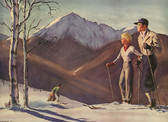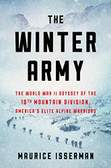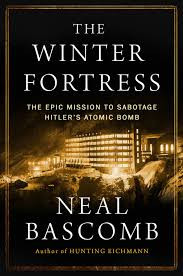 Loading... Please wait...
Loading... Please wait...Currency Displayed in
The Winter Fortress
Product Description
Review of Neal Bascomb, The Winter Fortress. The Epic Mission to Sabotage Hitler’s Atomic Bomb. New York: Houghton Mifflin Harcourt, 2016. Paperback
E. John B. Allen
Let us be quite clear at the start: this is not a history of skiing. But it is the tale of courageous men accomplishing extraordinarily dangerous missions in which skis were absolutely essential. On the whole, there is nothing new about the use of skis in Neal Bascomb’s excellent history; there have, after all, been six histories of the event (in English), including one by participant Knut Haukelid, Skis Against the Atom. Near the Norwegian town of Rjukan (Telemark), the Vemork “heavy water” plant provided this essential ingredient for the making of the Nazi atomic bomb.
The Germans had occupied Norway in April 1940 and put increasing pressure in 1942 and ’43 for higher production of ‘heavy water’. Knowledge of the German interest was passed on to British authorities who launched a 2-plane glider-borne attack on 20 November 1942 that resulted in total failure with the loss of the entire contingent nowhere near Vemork. Then, three months later, a group of Norwegians trained in Scotland, parachuted in on 17 February 1943 and with detailed preparation and pluck, the team got into the plant and destroyed some vital parts of it. Six of them made the 280 miles out to Sweden on skis in just under three weeks, outwitting a massive man hunt.
By mid-April 1943, the plant was operating again and would be back on schedule about the middle of August. The allied command then bombed the plant and although much damage was wrought, one vital section, the “SH-200 high concentration” plant was undamaged. Even so, the decision was made by the Germans to close Vemork down, and send any working equipment along with whatever “heavy water” could be saved to Germany. On 29 January 1944, Norwegian resistance got news of the removal plan. The 40 drums of ‘heavy water’ were to be the first shipment to go to Germany.
The resistance cell had nine days to formulate a plan and settled on the destruction of the ferry Hydra designated to carry the barrels amounting to some 4000 gallons of ‘heavy water’ while crossing Lake Tinnsjø. On the night of Saturday 19 February, three members of the resistance got aboard the ferry, planted explosives timed to go off the next day when the ferry was over the deepest section of the lake, and managed to escape without having been discovered. The ferry went down exactly as planned. Meanwhile one of the three returned to the high country to continue resistance work and the other two were on a train to Oslo and with the help of resistance cells along the way, made it across the border to Sweden.
The story is choc full of heart-stopping moments, descriptions of incredible hardships, near starvation, concern for reprisals on local inhabitants, the essential equipment of skis and…ultimate success. This was not, of course, the only use of skis in World War II. They had become the instrument of choice for the Finns against the Russians, of some Russian partisans against the Germans, of Polish resistance couriers and others, but the use of these simple wooden boards in the Vemork attack and escape remain unique in the long history of skiing.







